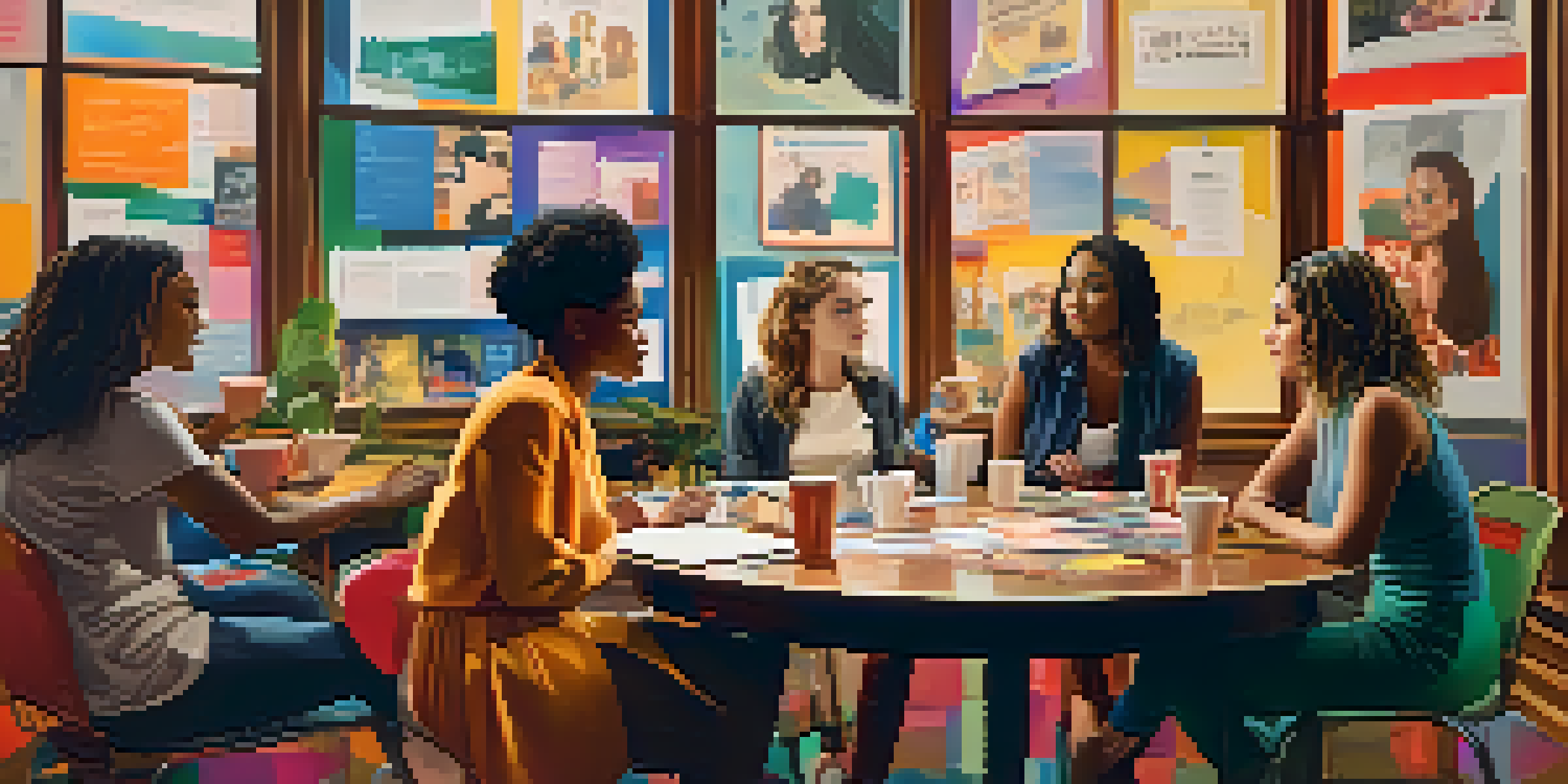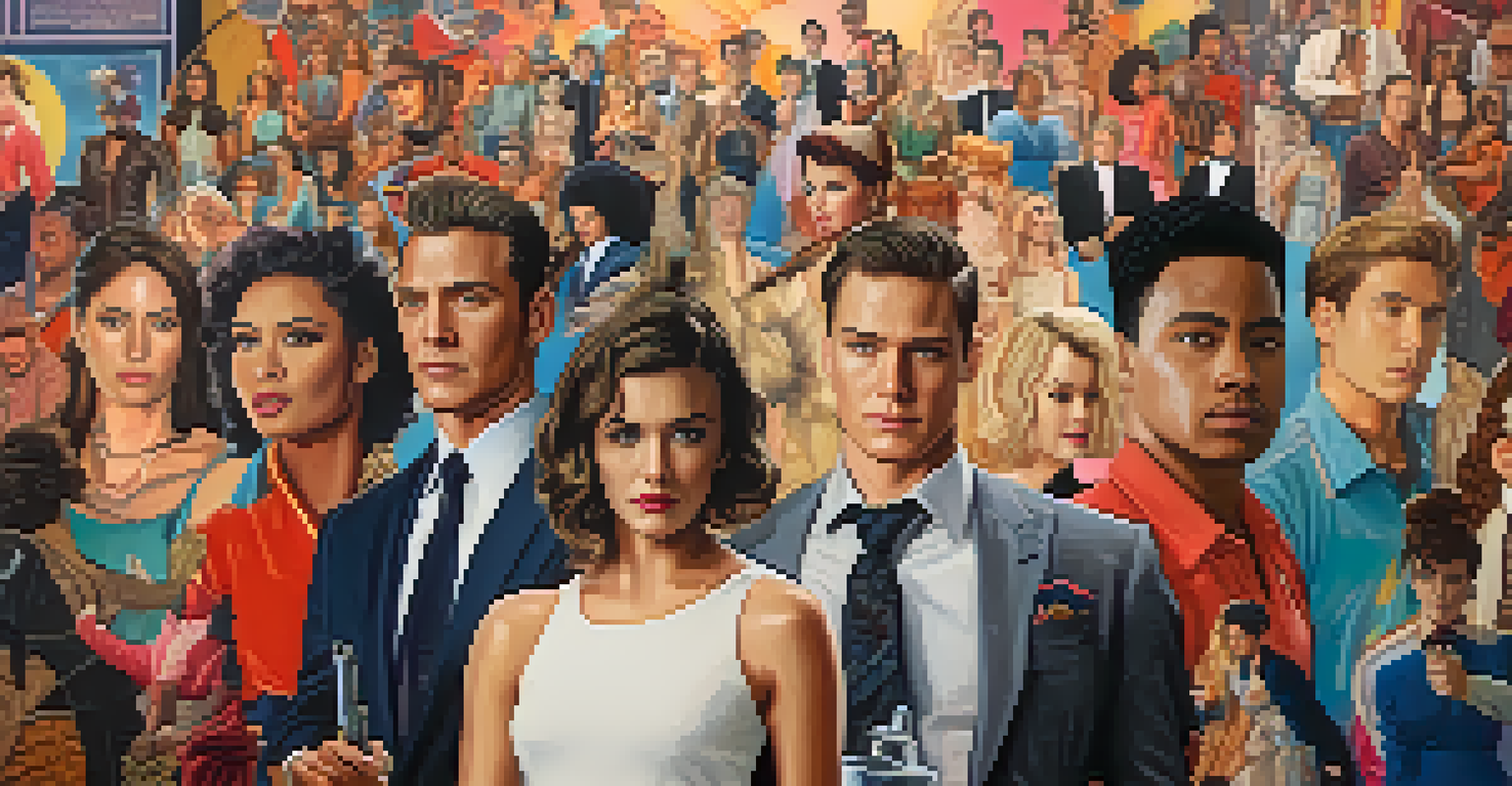How Hollywood Portrays Gender Roles Across Different Cultures

Understanding Gender Roles in Hollywood's Lens
Hollywood has long been a mirror reflecting societal norms, and gender roles are no exception. From the strong, independent female leads to the traditional male heroes, these portrayals shape our perceptions of gender. But how do these roles vary when viewed through the lens of different cultures? Understanding this can reveal much about both Hollywood's influence and cultural diversity.
Cinema is a mirror by which we often see ourselves, and we need to ensure that it reflects the diverse range of human experiences.
The portrayal of gender roles often comes with stereotypes that can be both empowering and limiting. For instance, while Western films may celebrate the 'strong woman' trope, other cultures might emphasize communal roles for women. This highlights a fundamental difference in how gender expectations are constructed worldwide, often influenced by historical and social contexts.
Ultimately, recognizing these portrayals enables us to engage critically with the media we consume. As audiences, we can appreciate the storytelling while questioning the underlying messages about gender. This awareness is vital in fostering a more nuanced understanding of gender roles across cultures.
Hollywood's Impact on Global Gender Perceptions
Hollywood has a powerful reach, influencing gender perceptions across the globe. Films like 'Wonder Woman' and 'Black Panther' have not only celebrated diverse characters but have also sparked conversations about gender norms. However, this influence can sometimes homogenize cultural distinctions, presenting a narrow view of gender roles.

For example, the portrayal of women in Asian cinema often varies significantly from that in Western films. While Hollywood might depict Asian women as submissive or exotic, many Asian films showcase them as fierce warriors or intellectuals. This contrast highlights how cultural narratives can clash with Hollywood’s interpretations.
Hollywood Shapes Gender Perceptions
Hollywood's portrayal of gender roles influences global perceptions, often homogenizing cultural distinctions.
The global audience’s response to these portrayals is complex. Some viewers embrace Hollywood's narratives, while others resist them, advocating for authentic representations of their cultures. This discourse underscores the importance of diverse storytelling in shaping gender perceptions worldwide.
The Role of Stereotypes in Gender Representation
Stereotypes are a double-edged sword in Hollywood’s portrayal of gender roles. On one hand, they can provide recognizable character traits that audiences connect with; on the other, they can reinforce harmful biases. This is particularly evident when comparing portrayals of gender in various cultural settings.
The stories we tell shape our perceptions of who we are and who we can be.
For instance, in many action films, the male hero is often depicted as physically strong and emotionally stoic. In contrast, female characters are frequently shown as nurturing or overly emotional. Such stereotypes can overshadow the complexity of real individuals, disregarding the rich diversity of experiences across cultures.
Challenging these stereotypes is essential for creating more balanced representations. Filmmakers increasingly recognize this and are working to portray multi-dimensional characters that reflect real life. This shift not only enriches storytelling but also contributes to broader societal change.
Cultural Context: How Background Shapes Gender Roles
Cultural context plays a crucial role in shaping gender roles within Hollywood films. Different cultures have unique traditions, values, and beliefs that influence how gender is represented on screen. For example, in some cultures, gender roles are strictly defined, while in others, there is more fluidity.
In Indian cinema, for example, the portrayal of women has evolved significantly, moving from traditional roles to more empowered characters in contemporary films. This evolution reflects shifting societal attitudes towards gender and showcases the power of storytelling in effecting change. On the other hand, some films may still cling to outdated stereotypes, illustrating the tension between tradition and modernity.
Stereotypes Limit Gender Representation
Stereotypes in films can reinforce harmful biases, overshadowing the complexity of real individuals.
Understanding these cultural nuances allows audiences to appreciate the depth of storytelling. It highlights that gender roles are not static; they are continually shaped by cultural dialogues and societal shifts. This perspective encourages viewers to engage with films on a deeper level.
Positive Representations: Breaking Gender Norms
In recent years, we have seen a surge in films that challenge traditional gender norms and offer positive representations. Movies like 'Hidden Figures' and 'Moana' showcase strong female protagonists who defy expectations and inspire audiences. These films not only entertain but also empower, encouraging viewers to rethink their perceptions of gender roles.
Such positive representations are not confined to female characters. Male characters, too, are increasingly portrayed with emotional depth, showcasing vulnerability and compassion. This shift is crucial in promoting a more inclusive understanding of gender that transcends the binary.
By breaking away from stereotypes, Hollywood can foster a more balanced narrative that reflects the diversity of human experiences. These films encourage conversations about gender roles and inspire future generations to challenge societal norms.
The Role of Women Behind the Camera
The influence of women behind the camera is becoming increasingly evident in Hollywood. Female directors, writers, and producers are shaping narratives that authentically represent gender roles across cultures. Their unique perspectives challenge the status quo and offer fresh storytelling approaches.
For instance, filmmakers like Ava DuVernay and Greta Gerwig are redefining how women are portrayed in cinema. By centering their stories on complex female characters, they create relatable narratives that resonate with audiences. This not only enriches the film industry but also opens doors for future female storytellers.
Women Drive Change Behind the Camera
The increasing presence of women in filmmaking is crucial for authentic and diverse representations of gender roles.
The growing presence of women in leadership roles is crucial for driving change in gender representation. It highlights the importance of diverse voices in shaping the narratives we see on screen. As more women take charge, we can expect to see even more authentic portrayals of gender roles across various cultures.
Future Trends: The Evolution of Gender Roles in Film
As society continues to evolve, so too will the portrayal of gender roles in Hollywood films. The rise of streaming platforms has opened up new avenues for diverse storytelling, allowing underrepresented voices to share their narratives. This shift indicates a future where gender roles are likely to become even more nuanced and varied.
Moreover, audiences are becoming more vocal about the types of stories they want to see. This demand for diversity is prompting filmmakers to explore unfamiliar territories, leading to richer portrayals of gender across cultures. As a result, we can expect more films that challenge stereotypes and embrace complexity.

Ultimately, the evolution of gender roles in film reflects broader societal changes. By continuing to engage with and support diverse narratives, audiences can help shape a more equitable media landscape. The journey towards authentic representation is ongoing, and every story plays a part in it.